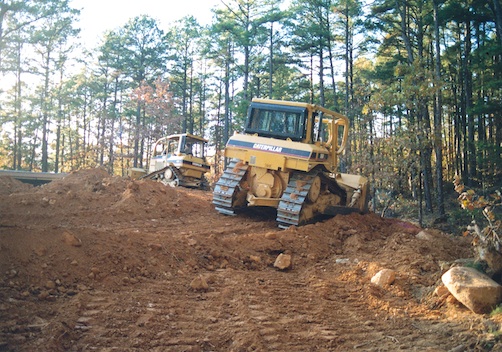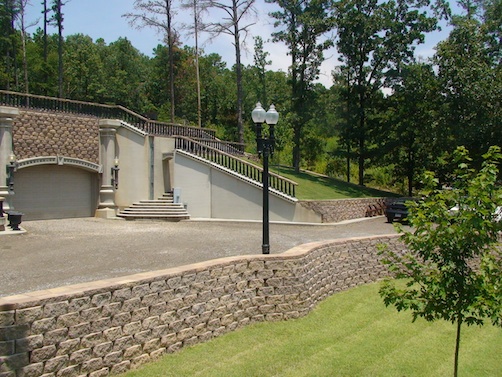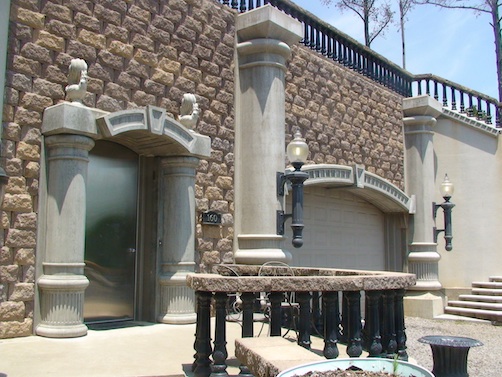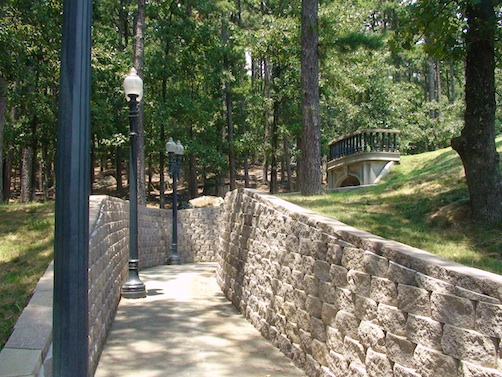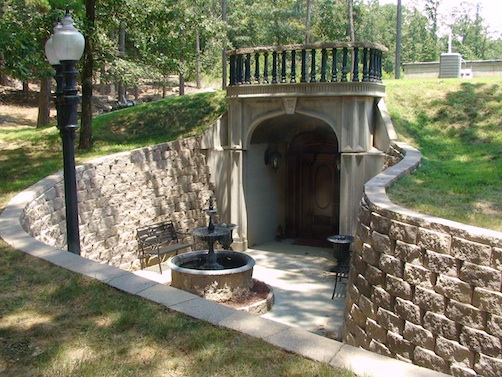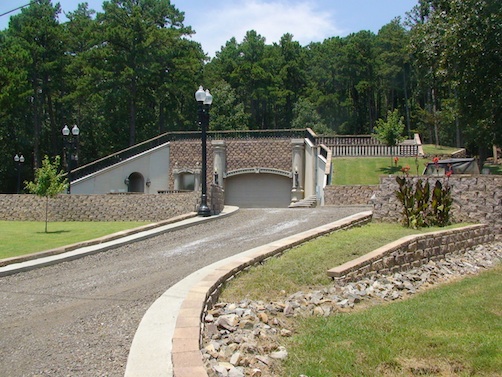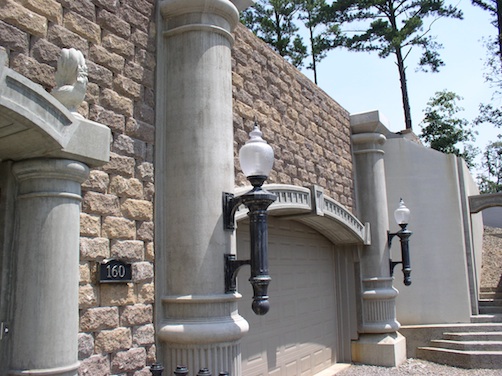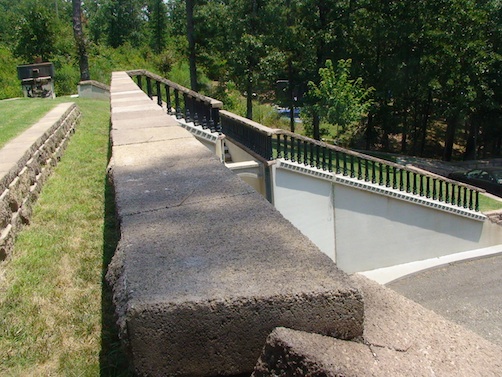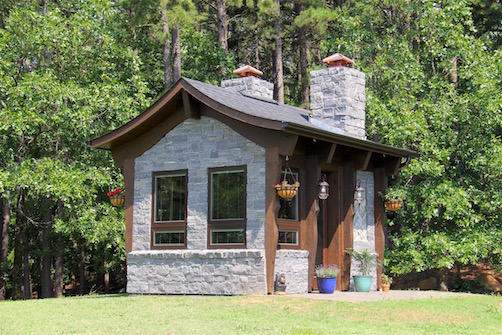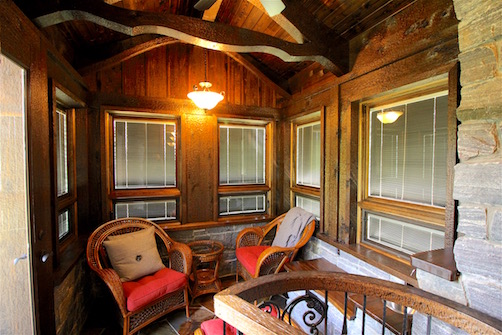
The Exterior
How we made it look like a home.
The finishing touches to the outside of our home may not have been as delicate and finessed as the interior woodwork, but they were certainly more physically demanding. Placing landscape blocks, pouring and finishing concrete, planting trees or shrubs or grass—all these things and many others, take their toll on the human body. We could have hired the work done, no doubt, but we were determined to complete this project ourselves.
There is a unique satisfaction in the heart when, at the end of the day, or the week, or the month, or the year, or even the decade(s), you can look back and say “We did that!”
Backfill
Once the waterproofing was finished, covering the entire structure began. Basically, we have a 2 foot crushed gravel jacket completely surrounding the home. This prevents any hydraulic pressure from forcing its way through our waterproofing membrane. The house was structured to carry the constant load of the dirt above it, as well as the heavy equipment required to move it into place. Our final grading was completed to a finish depth of 4 feet on top of the house. Only grass is allowed to grow on top of the house. We do not want the risk of any root systems finding their way to the waterproofing. Our mean temperature in this area tends to be quite warm during the summer. Air conditioning is a larger concern than heating, when considered over a 12 month average. Our home has no insulation under the floor, or on the roof or on the walls. We wanted to take advantage of as much cooling from the earth as possible. The results have proven that to be a wise decision.
Back to top
Retaining Walls
We needed dirt to cover as much of our building as possible. That required some extensive retaining walls. And because this face of our house is the first impression for visitors, we wanted it to be at least a little interesting.
Back to top
Columns
Concrete columns flank our garage door. You don’t buy these at Walmart. We carefully built our own forms, creating what we thought would look nice. Weighing in at approximately 20,000 lbs each, they were then lifted by crane and welded into position.
Back to top
Landscape Blocks
Creating a walkway to what is technically our front door involved more dirt work and landscaping. Our choice was to use 70 lb. landscape blocks. 7,000 blocks and many weeks later, our walkways and flower beds emerged.
Back to top
Front Door Surround
Due to the floor plan we chose to use in our home, our front door inconveniently opened up at almost the deepest point of the house. We cast a concrete surround for this entry and placed its 5 pieces into position with a crane. Our entry now opens onto a patio area with a small fountain and walkway through the hillside.
Back to top
Driveway
Our drive is still a work in progress. The curbing and landscape blocks are all in place. All that is left is some final grading and pavement—probably stamped concrete or large paving blocks.
Back to top
Garage View
The landscape blocks worked so well along our walkways, that we decided to recut and modify them to face our entire garage wall. This is our only exposed house wall and faces south. The summer heat is brutal there.
Back to top
Handrail
Safety was a very large concern. The drop from the edge above our garage door is a life threatening 24 feet. We had done extensive work with the landscape blocks, and decided to creatively use them to create a 12 inch wide hand rail suspended on 6 inch aluminum balusters.
Back to top
Sitting Room
On top of our home sits a small space. For lack of a better term, we call it a “sitting room”. Built of rough sawn western cedar timbers from Oregon and black limestone from northern New York, it is the one place in the house that we can look out of windows. (If you are wondering, yes, we did all of the decorative, curved, cedar beam work ourselves, as well as all of the stonework.) It serves as a third egress from the house, with a spiral staircase going all the way down into the building. In addition, all of the ducts and flues from the entire home, exit to the outside world through this structure. You can see the two fireplace flues topping out above the roofline.
Back to top
